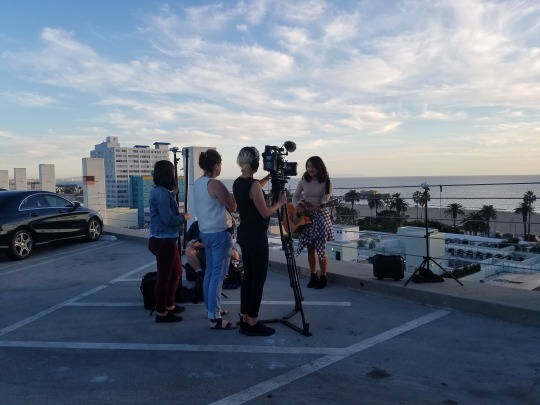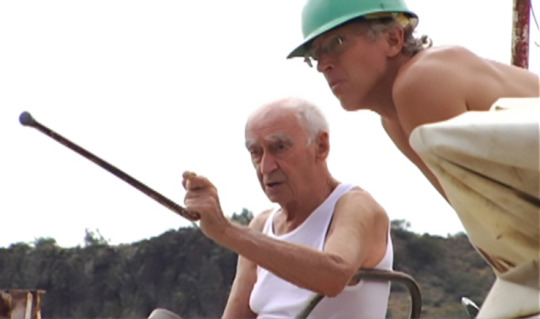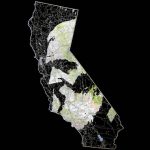Fiscal Sponsorship Grit: Work-In-Progress Highlights
NYFA Fiscal Sponsorship “lends credibility to your project; you’re telling a potential funder you’ve been vetted, and this organization stands behind your work.” – David Licata
This fall NYFA Fiscal Sponsorship celebrates our nearly 700 projects by sharing a sneak peek of three current projects in the midst of fundraising and production. Read on to learn more about the creative vision of the Strangers Project, Maya Healers: A Thousand Dreams, and A Life’s Work, and how these projects utilize sponsorship.

Q & A with the Strangers Project
Project creator Brandon Doman, Taylor Nagel, and Jess Vogel make up the team behind the Strangers Project. Here, Vogel fills us in on what’s new with the project.
NYFA: What is the Strangers Project?
Jess Vogel: The Strangers Project is an ongoing collection of truthful, handwritten, and anonymous stories that people have shared in-person over the past six years. Creator of the project, Brandon Doman has met each one of the +25,000 people who have shared a story at one of his pop-up story spaces. It is both the collection of these stories and the act of creating a space for stories, that is the Strangers Project. Filmmakers Jess Vogel and Taylor Nagel have partnered with Brandon to take the Strangers Project on a cross-country tour. They are making a documentary about the journey, the people they met, and some of the stories collected on the road.
NYFA: What phase of the project are you in? Are you still collecting stories?
JV: We just wrapped up the 39-day cross-country tour. Altogether, we visited 15 different states and 22 cities. In each location, we set up the Strangers Project and collected stories from residents of the community. We captured moments of curiosity and contemplation as people read through some of the stories, as well as conducted interviews with many contributors, exploring a deeper meaning of the stories they shared.
Currently, we are in the very early phases of post-production for the film. There are hundreds of hours of footage to review, catalog, and tag—a daunting task but one we’re excited to dive into. We also are starting to look for artists and animators to partner with, as we hope to bring some of the stories to life in the film through incorporating animation and illustration into some of the live-action footage. In addition to reviewing footage and looking for collaborators, we’ll be applying to grants to cover funding for the finishing phase of the film.
In the meantime, the Strangers Project is back in NYC! While the weather is warm enough, Brandon will be out collecting stories around the city. If anyone wants to read or share a story, you can probably find Brandon and the project in Washington Square Park.
NYFA: What made you interested in investigating writing as a form of human connection?
JV: In general, human connection is something all three of us have been interested in from the beginning. The idea of connecting to each other through stories, specifically hand-written stories, is a concept our society is slowly forgetting. In many ways, you could argue that storytelling has evolved in the digital age, creating space for transparency and crafting one’s own personal narratives. But it’s also stripped away some of the freedom that comes from the anonymity of the written word. Throughout the national tour, folks who engaged with the project reminded us how refreshing it was to take a pen to paper. It acts almost like a therapeutic exercise for many, giving pause to reflect on their thoughts and organize them in a cohesive way. For people reading, there are hints of personality and character of the writer that come out in the handwriting, making it feel even more personal and real. The connection that comes from reading another person’s words, in their own handwriting, is a truly intimate one.
NYFA: Why did you choose NYFA Fiscal Sponsorship?
JV: We immediately recognized that obtaining fiscal sponsorship could help bring in major contributions and partnerships that a small, independent film would not be able to achieve on its own. For example, we’ll be heavily relying on our fiscally sponsored status as we move into post-production and approach artists and animation houses. The ability to contribute in-kind donations, such as studio time or artwork, will enable us to involve major companies and talent that we would never be able to afford alone. Collaboration from start to finish is an essential part of this project. It is through fiscal sponsorship that we will be able to work with such wonderful creative partners.
NYFA: The Strangers Project is new to NYFA’s Fiscal Sponsorship program. Do you have any suggestions for folks considering applying to the program?
JV: The only suggestion that we have is to recognize that everything takes time. NYFA is a powerful ally and full of wonderful people that truly want you to succeed, each of whom have extensive knowledge and experience. Just recognize it will take some time to make it happen.
NYFA: What is next for the project?
JV: World domination. Also known as post-production.

Q & A with Fran Antmann, Maya Healers: A Thousand Dreams
NYFA: What is Maya Healers: A Thousand Dreams?
Fran Antmann (Fellow in Photography ‘89, ‘98, Nonfiction ‘93): Maya Healers: A Thousand Dreams is a book of photographs and writing that explores the power and mystery of ancient indigenous healing practices among the Maya people of Guatemala, who live along the shores of Lake Atitlan. The photographs speak to the close relationship of these communities with the natural and spiritual worlds and evoke the life and culture of indigenous villages.
NYFA: What phase of the project are you in?
FA: I am doing some minor final revisions on the book and updating the acknowledgements to include the generous contributions from those who supported my crowdfunding campaign. The book will be published in Delhi, India in January 2017.
NYFA: Why did you decide to share these photographs as a book, rather than a different form of exhibition or publication?
FA: Photographic books are something I hold very dear. Since writing has always been an important part of my work, I find that text on an exhibition wall does not work in the same intimate way that it does in book form. I have designed a book where words and images work on simultaneous planes, and that interplay of text and image is part of my vision. I intend, of course, to find venues for exhibition of the project.
NYFA: Why did you choose NYFA Fiscal Sponsorship?
FA: Since artists are often required to pay for or at least supplement the cost of publishing their books, even if they have a publisher, I needed to raise funds for my publication. And so I decided to do a crowdfunding campaign. NYFA has helped me throughout my career in the form of photography and non-fiction writing Fellowships, so I decided to turn to NYFA Fiscal Sponsorship to help with the fundraising. I believe that sponsorship was an important boost for my fundraising efforts. My affiliation with NYFA gave the project gravitas, and the non-profit status allowed for tax-deductions for contributors.
NYFA: What tips would you share with other artists interested in publishing a book?
FA: I would suggest making an excellent dummy and if possible, even having a designer work on the layout. Be prepared to take the work through many iterations. My book went through many revisions, and I did not pressure myself to meet an unrealistic deadline. I shared it with friends and colleagues and really took their suggestions to heart. Self-publishing is a respected and viable alternative if a publisher can’t be found. It no longer carries the stigma of vanity press. I see that many books receiving awards at international competitions are self-published.
NYFA: What is next for Maya Healers? What is next in your practice?
FA: Even though my crowdfunding campaign ended and was successful, I am planning to continue fundraising through fiscal sponsorship to raise the last few thousand dollars needed to supplement the printing costs of the publication. I am planning to travel to India in January 2017 for the printing of the book. Since I will be in India for a few weeks (during a semester break from teaching), I will be starting a new photography project on traditional healers in India. I am doing research for that project at this time.

Q & A with David Licata, A Life’s Work
NYFA: What is A Life’s Work?
David Licata: A Life’s Work is a “documentary” about people engaged with projects or research they may not see completed in their lifetime, projects that could have a profound, positive global impact. It’s about legacy, taking the long view, maintaining a sense of wonder, and devoting your life to something bigger than yourself. I’d rather refer to A Life’s Work as a film essay, but unfortunately grant and film festival applications don’t have that as a check box.
NYFA: What phase of the project are you in?
DL: The film is deep into post-production. We just finished a crowdfunding campaign, using the Indiedgogo-NYFA partnership. Music is currently being composed. We raised enough to pay for an animator and half of the archival footage. We’re still fundraising for the other half of the archival, sound mixing, color correcting, upressing, and a bunch of things like that.
NYFA: How did you choose from the many, many projects out there that span longer than a lifetime and could have a positive global impact?
DL: I never thought of A Life’s Work as a call-to-action film, and early on I felt that if I included an activist working on some heat-of-the-moment topic, it would throw the film out of balance. So that narrowed the field quite a bit. I also knew this film was going to take a long time to make, though I didn’t realize it would take 11 years! So the projects had to be something I was very interested in.
The truth is, I reached out to nine people about participating in the film. A couple shot me down, a few weren’t a good fit, and another I began interviewing but realized her story wasn’t going to work. I’ve always wanted the subjects to be from different disciplines. I wanted subjects that contrasted each other, but also complemented each other, and they had something in common: they all retained a sense of wonder that most of us had as children. Who hasn’t gazed at the stars and wondered if we are unique, built ambitious structures from Legos or blocks, planted a seed and watched it grow, or fell in love with a song and exposed someone to it? So yeah, they are involved in these outsized, seemingly impossible quests, but their stories are similar to everyone’s stories, and really, whose work is ever really done?
NYFA: Why did you choose NYFA Fiscal Sponsorship?
DL: My first fiscally sponsored project was a short film I directed, Tango Octogenario. I was looking for funding and came across a grant opportunity from the New York State Council on the Arts (NYSCA). In order to apply, though, you had to be fiscally sponsored. I applied to NYFA and they decided to sponsor the film. Then I applied for the NYSCA grant and, remarkably, I received it. Without NYFA that wouldn’t have happened. When it came time to become fiscally sponsored for A Life’s Work, NYFA was the only organization I considered.
NYFA: Do you have any suggestions for other filmmakers interested in using sponsorship to build their fundraising capacity?
DL: Do it! Being fiscally sponsored means you can apply to grants from places like NYSCA. It also lends credibility to your project; you’re telling a potential funder you’ve been vetted, and this organization stands behind your work. Being able to provide a tax-deduction to donors is a great perk, as is being tax-exempt with the funds raised through your sponsor.
NYFA: What is next for the project?
DL: I need to get the music and one-minute of animation in place. Then I’ll start showing it to people I trust for feedback. Once I have the money for sound, color correcting, and a few other post items, it will be ready for film festivals.
Interested in NYFA Fiscal Sponsorship for your next great idea? The projects-in- progress featured in this post are a mere glimpse of NYFA’s nearly 700 fiscally Sponsored Projects.
Our next quarterly no-fee application deadline is December 31, 2016 and you can learn more about NYFA Fiscal Sponsorship here. Read more about other exciting projects utilizing NYFA Fiscal Sponsorship, in our NYFA Fiscal Sponsorship Directory.
The NYSCA/NYFA Artist Fellowship Program awards $7,000 cash grants to artists living in New York State. Be sure to follow NYFA on Twitter and Facebook for the latest updates.
– Interviews by Madeleine Cutrona, Program Officer for Fiscal Sponsorship
Images in header collage (left to right): Taylor Nagel and Jess Vogel interviewing Strangers Project participants in Philadelphia; courtesy of Fran Antmann; SETI Dishes courtesy of David Licata
Images, from top: Behind the scenes of the Strangers Project in Santa Monica, CA; courtesy of Fran Antmann; courtesy of David Licata





